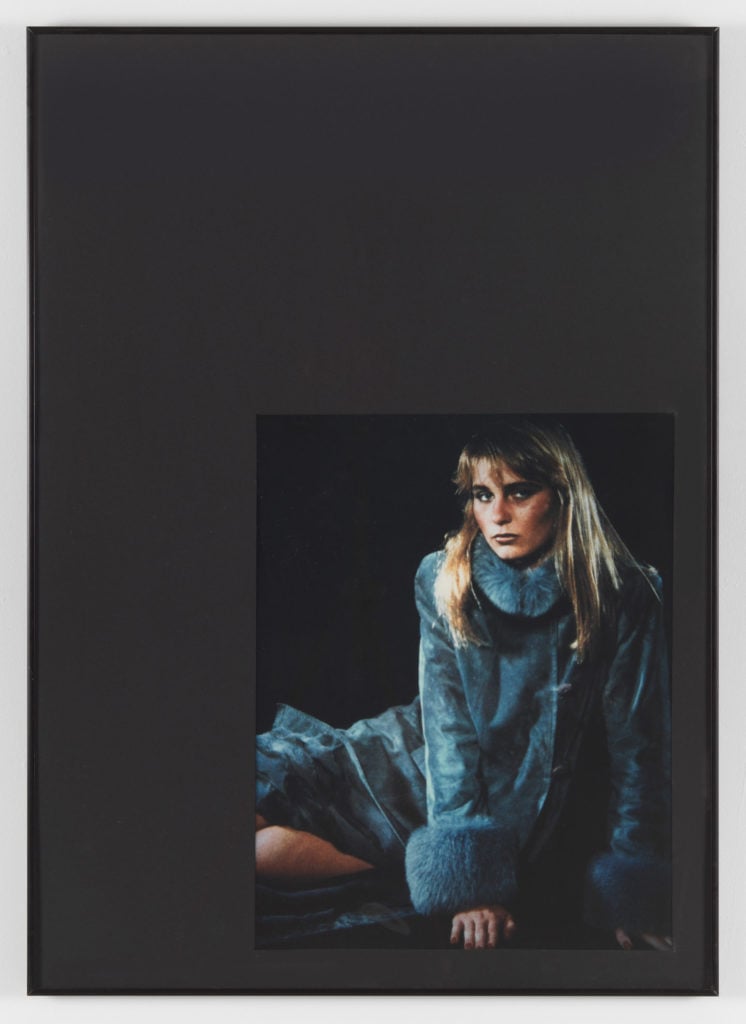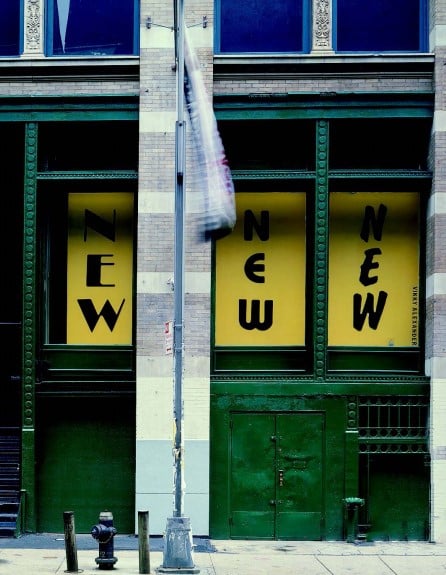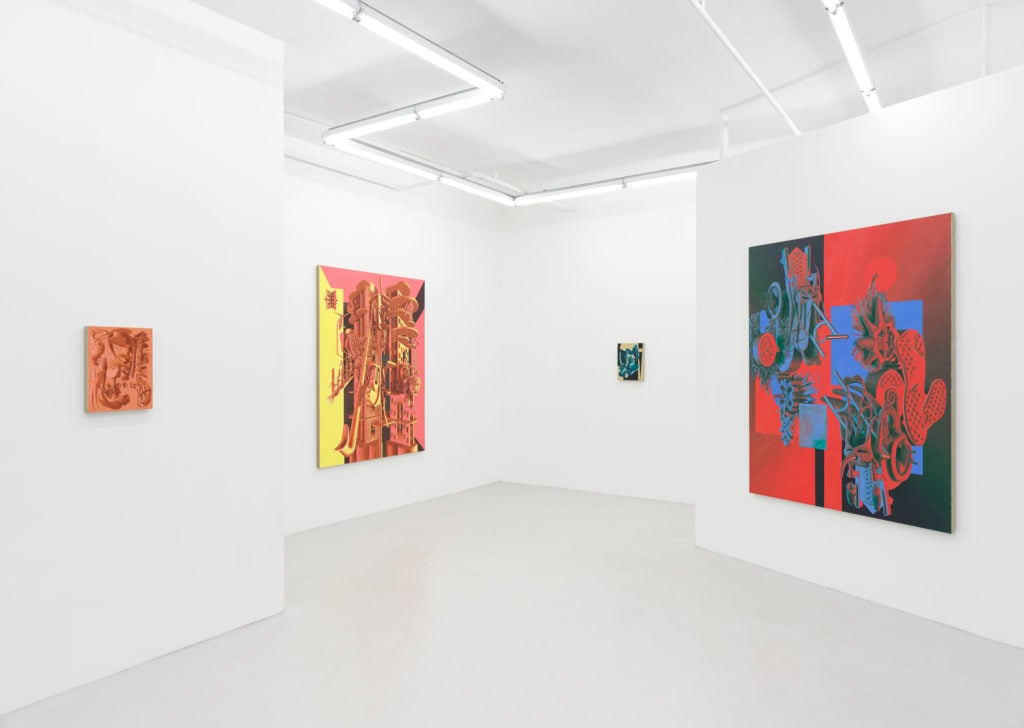Art Fairs
How New York’s Downs & Ross Gallery Weathers Difficult Times by Staying Nimble—and Keeping Its Eyes on the Vanguard
Tara Downs and Alex Ross will present works by Pictures Generation artist Vikky Alexander.

Tara Downs and Alex Ross will present works by Pictures Generation artist Vikky Alexander.

Nate Freeman

Unlike fairs in convention centers—anonymous windowless vessels that make you feel like you could be in Topeka or Dubai—the Independent Art Fair, with aerial views of Tribeca’s old Federal-style mansions and retrofitted factories exploding, is many glorious stories above the spiraling road to the Holland Tunnel.
But in case you get lost in the art and forget where you are, one work at Independent’s VIP preview Thursday, in the booth of local outfit Downs & Ross, will snap you back to New York City: Vikky Alexander’s New (1985/2020), vinyl signs that once hung in the windows of the original New Museum space on Mercer Street, just a few blocks away.
The location of Independent was definitely a factor that led Downs & Ross to stage a solo booth of Alexander, a Pictures Generation artist working in Manhattan in the ’80s, at the fair, after years of participating in the Armory Show, which opens today at Piers 52 & 54. It also helped that fair founder Elizabeth Dee is a longtime fan of Alexander’s work, and that her staff is well-versed in the artists who once lived in the area surrounding the fair.
“The project we had in mind was far better suited to a team that had such profound scholarship with regard to the myth and romance of Downtown New York in the ’80s,” said gallery cofounder Alex Ross.

Vikky Alexander, New (1985/2020). Courtesy Downs & Ross.
Ross was sitting in the back office of his gallery, which he started with Tara Downs in 2017, and which now occupies a second-floor space on the lower stretch of the Bowery. Before coming together, Downs and Ross operated small but influential Lower East Side outfits: Tomorrow Gallery and Hester Gallery, respectively.
Downs founded Tomorrow in Toronto in 2011, with the artists Hugh Scott-Douglas and Aleksander Hardashnakov, and gave early shows to a stellar and rowdy group of art-makers, each of whom would be a highlight on any gallery’s roster: Ben Schumacher, Sebastian Black, Dena Yago, Parker Ito, Kelly Akashi. With Hester, Ross achieved a level of curatorial rigor perhaps lacking from other white cube spaces, giving early shows to artists such as Andrea Crespo.
They decided to merge into a single program after a spate of closings among the so-called “middle-class galleries,” and housed the operation out of their two spaces. Soon after their first shows, they vacated their old spaces in favor of the current larger space. (Consolidation is certainly a way to cut overhead.) Since then, they’ve been able to forge ahead with a new identity: though some of the artists from the old programs are still here, Ross sees the operation as greater than the sum of its parts.

Exterior view of Spring Street Studios, the venue for Independent New York 2019. Photography by Etienne Frossard. Image courtesy of Independent.
“I don’t think the gallery’s ever been about our biographic dimensions, or this conglomerate of our CVs,” he said. “I don’t think we’d want to romanticize our individual vanguard moments. We share a lot of similarities. We’re always forward looking, we’re protesting against forms of forgetting, and contextualizing nascent developments in visual culture within the context of New York’s antecedence.”
By presenting a solo booth of important works by Alexander, who has been working with Downs for years, they’re holding their own at Independent, which is a thinking person’s fair. Included in the presentation are works that were shown in landmark exhibitions, including Alexander’s 1985 New Museum show and a two-person exhibition with her former husband, fellow Pictures Generation artist James Welling, held at the Kunsthalle Bern in Switzerland. The both also includes her first-ever work, which comes from Welling’s collection.
The involvement of Independent founder Dee, a longtime supporter of Alexander’s work, helped as well.
“She’s kind of been a continuum of interest, and when we approached her, she took it up right away,” said Downs.
“It does have that curatorial focus,” she said of the fair. “People go there because they want to go in deep. It’s not just this blockbuster event.”

Installation view of “Tom Waring: Consistent Estimator” at Downs & Ross on the Bowery. Photo courtesy Downs & Ross.
On Sunday, Downs & Ross opened the first-ever solo show of a young Brit named Tom Waring, who paints these wacked-out systems that wind through a series of gears, a reflection of a interconnected world bursting at the seams—apt painting for a month that will see the further global spread of a deadly disease, Ross noted.
The works were made over the last year, but were informed to some extent by The Decameron, the Italian novel that takes place outside of Florence during the Black Death, which may have killed as much as 60 percent of Europe’s population. Like coronavirus, that plague originated in China before traveling to Northern Italy, where an outbreak occurred.
“It’s kind of terrifyingly apposite,” Ross said.
And next month, the gallery will stage a show of new work by the Berlin-based Rute Merk, who has made a series of paintings in collaboration with semi-reclusive fashion godhead Demna Gvasalia, the iconoclastic creative director of Balenciaga.
“It was instigated at the invitation of Balenciaga,” Ross said, being charmingly evasive. “She was invited to produce a body of work that responds to and interpolates the collection for Spring/Summer 2020.”
Balenciaga obsessives, take note: It opens April 17.